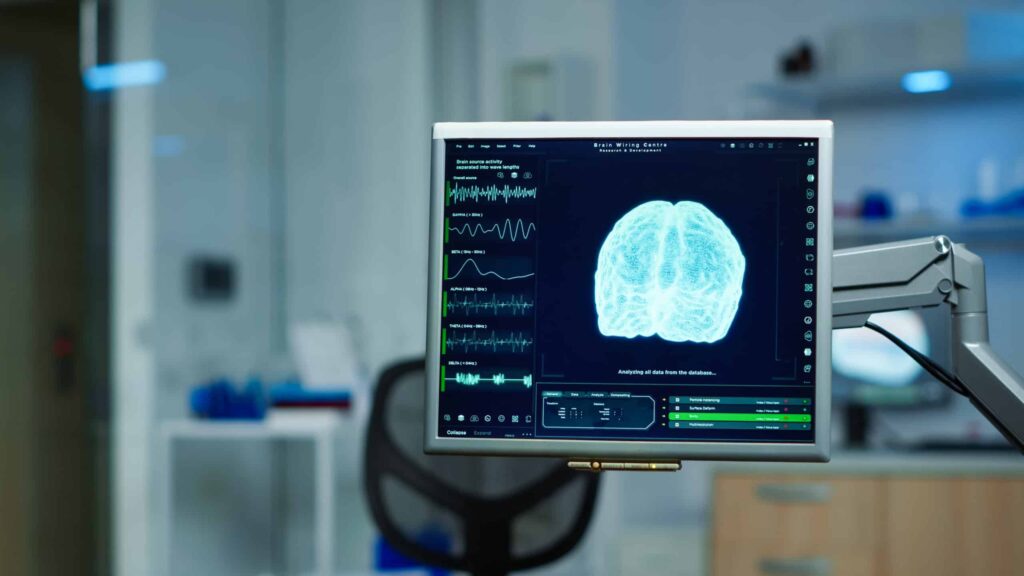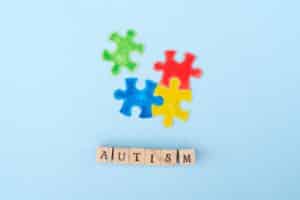
How Long Does it Take to Detox from Different Drugs?
- How long does detox take?
- What are the withdrawal symptoms of common substances?
- How does a person know that they need drug or alcohol detox?
- What steps need to be taken to complete a detox?
Table of Contents
What Is Drug Detox?
It’s important to understand that alcohol and drugs are toxins: They are poisons that the human body recognizes and responds to as toxic substances. Drug or alcohol detoxification is the process of eliminating these toxins from the body—hence the term, “detox.” By undergoing a carefully supervised detox program, individuals give themselves a better chance at restoring their physical health, strengthening their immune systems, and reducing the overwhelming cravings that often make early recovery so difficult.
When an individual who has abused drugs or alcohol for a long time goes through detox, they typically experience physical and/or psychological withdrawal symptoms. These symptoms are a physiological response to the sudden decrease or elimination of the substance that the body has become dependent upon. The range of withdrawal symptoms can vary widely, from mild discomfort and mood swings to severe nausea, tremors, or even life-threatening complications. This is why having professional help throughout this crucial stage is highly recommended, as it can minimize risks and help patients remain as comfortable and stable as possible.
The detox process can be challenging. So, it’s generally safer, more comfortable, and more effective with the support of medical and mental health professionals. A team of skilled doctors, nurses, and counselors can help manage the most severe withdrawal symptoms and ensure the detox and addiction recovery are completed. Under their guidance, individuals receive comprehensive assessments, medication management when appropriate, and therapeutic interventions that not only help alleviate discomfort but also empower them with coping strategies. This comprehensive approach sets the stage for ongoing treatment, counseling, and aftercare support, ultimately enhancing the likelihood of long-term sobriety and sustained well-being.
When Is a Drug Detox Necessary?
The first step in recovering from an alcohol or drug addiction is to admit that there’s a problem. Sometimes, the addict needs to “hit bottom” before they recognize how damaging their drug use has been, e.g., how it has caused all kinds of physical, psychological, legal, financial, and relationship problems. For some individuals, “hitting bottom” may mean losing a job or a home, experiencing severe health issues, or encountering serious legal consequences. For others, it could be a moment of profound self-awareness, where the pain and chaos their substance abuse has created become impossible to ignore. Acknowledging the existence of a problem, regardless of how low one has fallen, is often the most pivotal and courageous action a person can take on the path to long-term recovery.
The next step on the road to recovery is to undergo detox. When a person starts to ask themselves—”I wonder if I need a drug detox?”—chances are good that the answer is yes. Seeking professional guidance can help determine if detox is appropriate and ensure that any underlying mental health issues are addressed simultaneously. It’s probably a good idea to consult with a psychiatrist or other mental health professional, as these experts can assess an individual’s physical and emotional needs, recommend the most effective treatment strategies, and provide ongoing support throughout what can be a vulnerable period. By combining medical supervision, therapy, and careful monitoring, individuals are better positioned to reduce the discomfort of withdrawal symptoms, gain valuable coping skills, and prepare themselves for the next phases of a sustainable recovery journey.
DSM-5 Criteria for Substance Use Disorder
The official psychiatric term for drug addiction is “substance use disorder.” And the manual that mental health professionals consult to make their diagnoses is the Diagnostic and Statistical Manual of Mental Disorders. This manual has undergone several revisions; and is currently on its fifth edition—which is why its current abbreviation is DSM-5.
- Impaired control
- Social problems
- Risky use
- Physical dependence
A substance abuse disorder is also diagnosed according to its severity: mild, moderate, or severe.
If an individual is officially diagnosed with a substance use disorder, then undergoing a detox—as the first step in recovery from the addiction—is an excellent idea.
Drug & Alcohol Withdrawal Symptoms
What withdrawal are symptoms commonly experienced during a drug or alcohol detox?
Withdrawal symptoms can range from mild to severe. And they differ from one person to the next. The specific symptoms that a person experiences, and their level of severity, will depend upon the following:
- The severity of the addiction.
- The type and quantity of substance that was used.
- Whether multiple types of drugs were used simultaneously.
- How long the substance was used.
- The method by which the substance was ingested (e.g., snorting, smoking, injecting, swallowing).
- The individual's age, weight, and gender.
- Their physical and psychological condition.
- The individual's genetics and family history.
- The particular withdrawal technique that is used.
Physical Symptoms of Drug Withdrawal
Physical detox withdrawal symptoms may include:
- Headaches
- Nausea and vomiting
- Diarrhea
- Muscle aches and pains
- Bone pain
- Fever and/or chills
- Excessive sweating
- Fatigue and exhaustion
- Hunger or loss of appetite
- Vividly unpleasant dreams
- Restlessness
- Insomnia
- Flu-like symptoms
- Heart palpitations
- Irregular breathing
- Changes in blood pressure
- Shaking and shivering
- Trembling and tremors
- Dilated pupils
Psychological Symptoms of Drug Withdrawal
The most severe and dangerous alcohol or drug addiction withdrawal symptoms—known as delirium tremens (DTs)—may include:
- High fever
- Rapid heart rate
- Extreme confusion
- Uncontrollable shaking/shivering
- Visual and/or auditory hallucinations
- Seizures/convulsions
What Causes Withdrawal Symptoms?
Long-term alcohol or drug use dramatically changes brain chemistry 4. When a person regularly drinks alcohol or uses drugs, their brain (along with their nervous and endocrine systems) adjusts to the substance’s presence.
Over time, they become physiologically dependent on the substance. They rely on alcohol or drugs to function and feel “normal.”
When such dependence has become strong, and the person then stops using the substance—the body responds to the sudden absence of the alcohol or drug with withdrawal symptoms.
During withdrawal, the person’s body struggles to reach a new state of homeostasis that doesn’t include the presence of the drug or alcohol.
Temporary disruptions in brain chemistry are part of this process—which can contribute to mental and physical withdrawal symptoms.

How Long Does a Drug Detox Take?
Like the specific withdrawal symptoms that someone experiences, the length of the detox process depends on the person’s unique situation: their physical and psychological condition; the type and amount of substance they were using, etc.
Typically, drugs that are smoked or injected will leave the body faster than those that are snorted. Drugs that are swallowed will stay in the body the longest.
And different substances require different amounts of time to be fully metabolized and eliminated from the body.
The Length of Detox by Substance
Different substances stay in the body for differing periods affecting the detox time for each. Typically, a person can detox from substances within a week—though cravings and other post-acute withdrawal symptoms may persist for months or even years afterward.
How Long Are Drugs Detectible on a Urine Test?
This information can serve as an estimate of how long they are active in a person’s body.
1 to 3 days
Opioids
(heroin and prescription painkillers like oxycodone)
1 to 3 days
Cocaine
2 to 4 days
Ecstasy
(MDMA)
1 to 7 days
Benzodiazepines
(sedatives, tranquilizers, and hypnotics)
2 to 3 days
Methamphetamine and amphetamines
(ADHD medications)
2 to 7 days
Tricyclic antidepressants
1 to 3 weeks
PCP
(phencyclidine)
1 to 3 weeks
Barbiturates
Detox Withdrawal Effects are Common to All Substances
Detox withdrawal symptoms vary widely from one person to the next and from one substance to another. However, there are some patterns and effects that are experienced in withdrawal from a wide range of substances. For instance:
Symptoms such as irregular heartbeat, irregular breathing, and changes in blood pressure are common during withdrawal from various substances.
During withdrawal from a substance, tolerance for that substance decreases rapidly. This can be particularly dangerous if the person relapses—since they could easily overdose due to the reduced tolerance.
Symptoms that the drug was designed to reduce or control “rebound”—i.e., appear in full force—when the person stops taking the drug. During withdrawal from benzodiazepine, for instance, a person may experience intense anxiety. Or during opioid withdrawal, they might feel significant pain. Or, during withdrawal from a stimulant, they may experience severe lethargy.
Individuals whose brains have been coerced into producing too much dopamine (a feel-good chemical) may experience an extreme lack of motivation or inability to experience pleasure, during the withdrawal phase of detox.
Detox Withdrawal Timelines for Common Substances
How long do withdrawal symptoms 6 last when detoxing from alcohol or drug addiction?
The specific answer to this question depends upon the particular substance that is being detoxed, the physical and psychological condition of the person going through the detox, and a host of other individual factors.
With this caveat in mind, here’s a look at some average withdrawal symptom timelines for different drugs—which can help an individual and their loved ones know what to expect.
Alcohol
Alcohol withdrawal symptoms may include:
- Elevated blood pressure
- Racing pulse
- Sweating
- Insomnia
- Tremors
- Anxiety
- Agitation
- Headache
- Nausea/vomiting
- Depression
- Hallucinations
- Seizures
Opioids
Opioid withdrawal symptoms can begin within 6-12 hours after the last use and peak sometime within the first week. The most severe symptoms will taper off by the end of the second week. But individuals who have used large quantities of opioids or have been addicted for an extended time may continue to experience withdrawal symptoms for months.
In medically assisted detox programs, opioid detox may be supported with drugs such as methadone and buprenorphine.
Short-acting opioid withdrawal symptoms generally begin 8-24 hours after the last use. The symptoms continue for an average of 4-10 days—though some heroin and opioid users remain on maintenance medication for months or years.
When detoxing from methadone and other longer-acting opioids, it may take 2-4 days before withdrawal symptoms begin to emerge. The symptoms typically fade within ten days.
Opioid withdrawal may include symptoms such as:
- Nervousness or anxiety
- Trouble sleeping
- Frequent yawning
- Nausea
- Diarrhea
- Flu-like symptoms
- Muscle cramps/body aches
- Runny nose
- Excessive sweating or salivation
Barbiturates (e.g., sleeping pills)
The initial barbiturate withdrawal symptoms—such as anxiety, insomnia, shaking, or circulation problems—can be expected to begin within the first two days after the last use. The symptoms will tend to peak during days 3-5. Specific withdrawal symptoms, such as insomnia, may get better and then “rebound” again, even more intensely, after a week—which would require treatment from a medical professional.
Barbiturate withdrawal symptoms may include:
- Anxiety
- Restlessness
- Insomnia
- Rhythmic intention tremor
- Dizziness
- Seizures
- Psychosis
Benzodiazepines (e.g., Xanax and Valium)
Withdrawals related to benzodiazepines such as Valium and Xanax typically begin within 24 hours of the last use, and peak in about three days. By around two weeks, the most severe symptoms have generally tapered off. However, protracted withdrawal symptoms can continue to appear for months or even years—particularly for those addicted to long-acting benzos like Valium.
Symptoms of benzo withdrawal may include:
- Anxiety
- Agitation
- Sweating
- Increased heart rate
- Trouble sleeping
- Nausea and/or vomiting
- Hallucinations
- Seizures
Stimulants (e.g., Cocaine & Meth)
The symptoms of withdrawal from stimulant drugs 8 , such as meth or cocaine, often taper off within the first week or two, while drug cravings can continue for months.
Stimulant users can expect a wave of depression within the first 72 hours of detox, followed by a “crash” that will leave them feeling depleted of all energy.
For the first week of detox, cravings for the drug will tend to subside—but often “rebound” later in the first month. Both mood swings and severe physical and emotional discomfort are expected during the first month of withdrawal.
Cocaine withdrawal symptoms generally begin within the first day of the last use, and these withdrawal symptoms may continue for weeks.
Symptoms of withdrawal from cocaine may include:
- Anxiety
- Irritability
- Paranoia
- Depressed mood
- Ongoing tiredness or lethargy
- Insomnia or hypersomnia
- Increased appetite
- Concentration problems
- Slowed thoughts and movements
- Intense drug craving
Methamphetamine 9 withdrawal symptoms generally begin within 24 hours after the last use. These symptoms can continue anywhere between a couple of days and 2-3 weeks.
Acute meth withdrawal symptoms can include:
- Fatigue
- Anxiety
- Irritability
- Lack of energy
- Weight gain
- Dehydration
- Chills
- Insomnia or hypersomnia
- Depression
- Inability to think clearly
- Withdrawing from others
- Drug cravings
Post-acute withdrawal symptoms from meth can include:
- Depression
- Mood swings
- Drug cravings
- Inability to experience pleasure
- Psychosis
- Suicidal thoughts
- Fatigue and excessive sleepiness
- Increased appetite
Hallucinogens/Psychedelics
Withdrawal symptoms from hallucinogens such as LSD, mescaline, psilocybin, PCP, ecstasy, ketamine, or salvia appear within 1-2 days after the last use. The initial symptoms may include headaches, drug cravings, and sweating.
Such withdrawal symptoms will tend to peak and taper off within the first week of the detox process. Also, the brain’s dopamine reward system changes may alter mood until natural levels return to normal.
Marijuana
Detoxing from marijuana is often easier than detoxing from other drugs or alcohol.
Withdrawal symptoms during marijuana detox typically begin within 1-3 days after discontinuation of use. The symptoms peak within ten days; a steady decline in severity starts over 10-20 days.
Marijuana withdrawal symptoms may include:
- Fever and/or chills
- Loss of appetite
- Headache
- Abdominal pain
- Sweating
- Fatigue
- Restlessness
- Anger, irritability, and/or aggressiveness
- Extreme nervousness or anxiety
- Insomnia and/or nightmares
- Depression or malaise
- Shakiness or tremors
Nicotine
Detoxing from nicotine (via cigarettes, pipes, or chewing tobacco) creates an intense craving within four hours of the last intake. Additional withdrawal symptoms will tend to appear within the first 24 hours. After about three days, most of the nicotine withdrawal symptoms will be at their peak. And after a week, most of the symptoms will have disappeared—though some may continue for up to a month.
Common nicotine withdrawal symptoms include:
- Nicotine cravings
- Restlessness
- Anxiety
- Insomnia
- Anger, frustration, and irritability
- Problems concentrating
- Depression
- Increased appetite
Treatment Support for Detox and Recovery
Both medical and mental health professionals typically support individuals undergoing drug or alcohol detox and rehab. Doctors can provide medications to assist the detox process. And therapists offer individual and group therapy sessions to help identify and address the root causes of the addiction, develop healthier habits, and lay a strong foundation for lasting sobriety.
SoCal Sunrise is a dual diagnoses treatment center in southern California that provides comprehensive addiction services—detox, rehab, and aftercare—for all common substances.
Our dedicated team of experts employs a combination of traditional and holistic methods for healing the mind and body, bringing balance back into our patients’ lives. These healing modalities—rooted in principles of effective treatment—include: 10
- Dual-Diagnosis
- Group Therapy
- One-On-One Psychotherapy
- Medication-Assisted Treatment
- Medication Management
- 12-Step Programs
- Yoga & Fitness
- Guided Meditation
- Creative Arts Therapy
- Family & Couples Therapy
We are dedicated to the kind of healing that encompasses body, mind, and soul—and supports the creation of an inspiring new life.
Questions or comments? Please feel free to contact us.

References & Resources
- Drug Policy Facts. Drug Use Estimates: Prevalence and Trends (July, 2022).https://www.drugpolicyfacts.org/chapter/prevalencehttps://www.drugpolicyfacts.org/chapter/prevalence
- Addiction Policy Forum. DSM-5 Criteria for Addiction Simplifiedhttps://www.addictionpolicy.org/post/dsm-5-facts-and-figures
- Health Direct. Addiction Withdrawal Symptoms.
https://www.healthdirect.gov.au/addiction-withdrawal-symptoms
- Banerjee Niladri (2014). Neurotransmitters in alcoholism: A review of neurobiological and genetic studies. Indian Journal of Human Genetics. Jan;20(1):20-31.
- U.S. Food and Drug Administration. Drugs of Abuse Home Use Test.
https://www.fda.gov/medical-devices/drugs-abuse-tests/drugs-abuse-home-use-test
- Clinical Guidelines for Withdrawal Management and Treatment of Drug Dependence in Closed Settings. Geneva: World Health Organization; 2009.
- Rahman A, Paul M. Delirium Tremens. [Updated 2021 Aug 27]. In: StatPearls [Internet]. Treasure Island (FL): StatPearls Publishing; 2022 Jan-. https://www.ncbi.nlm.nih.gov/books/NBK482134/
- Substance Abuse and Mental Health Services Administration. Treatment for Stimulant Use Disorders (2021). Rockville, MD: Substance Abuse and Mental Health Services Administration.
https://store.samhsa.gov/sites/default/files/SAMHSA_Digital_Download/PEP21-02-01-004.pdf
- National Institute on Drug Abuse. (2019, May). Methamphetamine Drug Facts.
- NIDA. 2020, September 18. Principles of Effective Treatment. https://nida.nih.gov/publications/principles-drug-addiction-treatment-research-based-guide-third-edition/principles-effective-treatment
Drug Detox FAQs
What does it mean to detox from drugs?
Detoxification, or detox, is the process of allowing the body to remove the drugs in it. It’s the initial step in a comprehensive rehabilitation program that offers all the tools required for recovery.
How long does it take to detox from alcohol?
The duration can vary depending on the severity of the addiction. Withdrawal symptoms can start as early as two hours after the last drink, peak within 24 to 48 hours, and can persist for weeks.
How about opioids like heroin or prescription painkillers?
Opioid detox can last from a week to a month. Acute withdrawal symptoms peak around 72 hours and can last a week or more, with post-acute withdrawal symptoms (PAWS) potentially persisting for months.
What's the detox duration for benzodiazepines (like Xanax, Valium)?
Detox from benzodiazepines can be prolonged, often lasting several weeks to months. The withdrawal process needs to be gradual to minimize risks.
What's the detox duration for stimulants like cocaine or methamphetamine?
Detox from stimulants usually lasts from a few days to a week. However, psychological symptoms, like depression and cravings, may persist for weeks or months.
How long does marijuana stay in the system?
While the intoxicating effects of marijuana typically wear off within a few hours, THC, the main psychoactive compound, can be detected in the body for weeks after consumption, especially in regular users. However, acute withdrawal symptoms usually last for about two weeks.
Does everyone experience withdrawal symptoms during detox?
Not everyone will experience noticeable withdrawal symptoms. The severity and duration of withdrawal depend on various factors, including the drug, dosage, duration of use, and individual physiology.
Is it safe to detox at home?
It’s crucial to consult with a medical professional before attempting to detox, especially from substances like alcohol or benzodiazepines, which can have life-threatening withdrawal symptoms. In many cases, a medically supervised detox is recommended.
What can help alleviate withdrawal symptoms?
Medically supervised detox programs often use medications to mitigate the severity of withdrawal symptoms. Over-the-counter medications can also help manage certain symptoms, but always consult with a healthcare provider first.
Is detox the same as treatment?
No, detox is just the first step. Comprehensive drug treatment includes therapy, counseling, and support to address the underlying issues leading to drug use and to build strategies for maintaining sobriety.
Clinically Reviewed By:
Joe Cavins, LMFT
Joseph Cavins holds a Bachelor of Science in Human Services from Cal State Fullerton and a Master of Science in Clinical Psychology from Pepperdine Graduate School of Education and Psychology. Initially inspired during his tenure as a school bus driver, Joseph balanced his duties with his studies, demonstrating a strong commitment to his academic pursuits. Post-graduation, he gained significant experience in clinical settings, interning at Aspen Community Services where he later served for 10 years, eventually becoming a Licensed Marriage and Family Therapist. He also earned certification from the Equine Assisted Psychotherapy Association as a Mental Health Provider.
Joseph’s professional journey includes roles in private practice and contracting with the Santa Ana Unified School District’s Special Education Department, culminating in his recent position at Southern California Sunrise Recovery in 2024.


